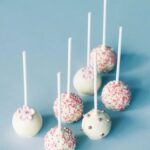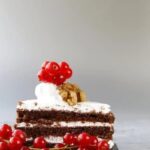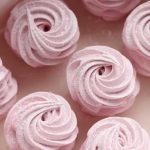Are you ready to unleash your inner baker and create beautifully decorated cakes that will impress friends and family? Look no further. This article will guide you through the step-by-step process of baking and decorating cakes, from gathering essential tools and ingredients to mastering advanced cake decorating techniques. Get ready to discover the joy of baking and decorate stunning cakes like a pro.
Baking and decorating cakes is not just about satisfying a sweet tooth; it’s a creative outlet that allows you to showcase your personality and bring joy to others through delectable treats. Whether you’re a novice baker or have some experience under your belt, this article will provide you with all the necessary knowledge and tips to take your cake-making skills to new heights.
The purpose of this blog is to serve as a comprehensive resource for anyone interested in learning how to bake cakes from scratch, as well as those looking to expand their repertoire of cake decoration techniques. Each section will cover various aspects of the process, starting with an introduction to help you understand what lies ahead. So, grab your apron, dust off your mixing bowls, and get ready for an exciting journey into the world of baking and decorating cakes.
Gathering Your Baking Arsenal
When it comes to baking and decorating cakes, having the right tools and ingredients is essential for success. In this section, we will explore the must-have items that should be in every baker’s arsenal.
Essential Tools:
To begin your cake baking journey, you’ll need a few key tools that will make your experience much easier and enjoyable. Here are some essential tools to have on hand:
- Mixing bowls: Different sized bowls are necessary for mixing ingredients.
- Measuring cups and spoons: Precise measurements ensure consistent results.
- Whisk or electric mixer: These will help you achieve a smooth batter consistency.
- Baking pans: Choose pans appropriate for the type of cake you want to bake.
- Cake turntable: This rotating platform makes frosting and decorating a breeze.
- Piping bags and tips: Ideal for creating beautiful designs with frosting.
- Offset spatula: Perfect for frosting cakes smoothly.
Essential Ingredients:
To create a delicious cake, it’s crucial to use high-quality ingredients. Here are the essentials you’ll need:
- Flour: All-purpose flour is commonly used for most cake recipes.
- Sugar: Granulated sugar adds sweetness to the cake batter and frosting.
- Eggs: Provide structure and moisture in the cake batter.
- Butter or oil: Used as fat in the recipe to keep the cake moist.
- Baking powder/baking soda: These leavening agents help the cake rise while baking.
- Milk or water: Adds moisture to the batter and helps with texture.
Having these tools and ingredients readily available will ensure that you’re well-prepared to bake and decorate your cake. With your baking arsenal in place, you can now move on to the next step: prepping for success by measuring, mixing, and ensuring the perfect cake batter consistency.
Prepping for Success
In order to achieve a successful baking experience, it is crucial to properly measure and mix the ingredients for the perfect cake batter. Accurate measurement techniques play a key role in achieving consistent results, ensuring that your cakes turn out moist and flavorful every time. Here, we will guide you step-by-step through the process of prepping for success in the kitchen.
The first step in prepping for success is to gather all your ingredients and tools. For accurate measurements, invest in a good set of measuring cups and spoons. It is important to measure dry ingredients, such as flour and sugar, using the spoon-and-level method.
This involves spooning the ingredient into the measuring cup or spoon until it is overflowing, then leveling off the excess with a straight edge. This guarantees that you are using the precise amount of each ingredient.
Once you have measured your ingredients accurately, it’s time to mix them together. Start by sifting your dry ingredients such as flour, baking powder, and cocoa powder together to remove any lumps and ensure even distribution. In a separate bowl, cream together your butter and sugar until light and fluffy using an electric mixer or stand mixer on medium speed. If your recipe calls for eggs, add them one at a time, beating well after each addition.
To achieve the ideal cake batter consistency, alternate adding dry ingredients and any liquids (such as milk or buttermilk) called for in the recipe. Begin by adding about one-third of the dry mixture to the butter-sugar-egg mixture and mixing until just combined. Then add half of the liquid ingredients while continuing to mix on low speed. Repeat this process until all of the dry mixture and liquids have been incorporated into your batter.
By following these steps for measuring and mixing your cake batter accurately, you are setting yourself up for success in creating delicious cakes with perfect texture every time.
| Ingredient | Measurement Method |
|---|---|
| Dry Ingredients | Spoon-and-level method |
| Wet Ingredients (e.g. milk) | Measuring cups or spoons |
| Butter or Shortening | Cutting measurements from the stick or using a kitchen scale |
The Baking Process
The baking process is crucial for achieving a moist and evenly cooked cake. It requires proper timing and understanding of your oven’s behavior. By following the guidelines below, you can ensure that your cakes come out perfectly baked every time.
- Preheating the Oven: Preheating the oven is an essential step in baking. It allows for even heat distribution and ensures that the cake bakes properly. Preheat your oven to the temperature specified in your recipe, usually between 325°F (163°C) to 350°F (177°C).
- Knowing Baking Times: Different cake sizes and types require varied baking times. Thinner cakes will generally take less time than thicker ones, while denser cakes may take longer. As a general rule, check for doneness by inserting a toothpick or cake tester into the center of the cake; if it comes out clean or with a few crumbs clinging to it, the cake is done.
- Understanding Hot Spots: Most ovens have hot spots, areas where heat is not distributed evenly. To overcome this, rotate your cake pans halfway through the baking process to ensure even cooking. If you notice that one side of your cake always bakes faster than the other, consider getting an oven thermometer to calibrate your oven’s temperature accurately.
- Avoiding Temperature Fluctuations: Opening the oven door frequently during baking causes temperature fluctuations, which can result in unevenly baked cakes or lead to collapsed centers. Avoid opening the oven door until towards the end of the recommended baking time.
By mastering these aspects of the baking process, you’ll be on your way to creating beautifully baked cakes that are moist, flavorful, and evenly cooked. Understanding your oven’s behavior and following proper timing guidelines will greatly contribute to your baking success.
From Plain to Artistic
Choosing the right frosting and fillings for your cake is essential to elevate its flavor and appearance. There are various types of frostings and fillings available, each with its own characteristics and suitability for different types of cakes. In this section, we will explore the different options and provide step-by-step instructions for preparing homemade frosting and filling or alternatives for store-bought options.
When it comes to frosting, some popular choices include buttercream, cream cheese frosting, ganache, and royal icing. Buttercream is a versatile option that can be easily flavored and colored according to your preference. Cream cheese frosting adds a tangy flavor that pairs well with carrot or red velvet cakes. Ganache provides a smooth and glossy finish that works beautifully on chocolate cakes. Royal icing is commonly used for intricate designs or as a base layer for fondant decorations.
To make homemade buttercream frosting, start by beating softened butter until creamy. Gradually add powdered sugar and any desired flavorings such as vanilla extract or cocoa powder while continuing to beat until light and fluffy. Adjust the consistency by adding milk or more powdered sugar as needed. For cream cheese frosting, combine softened cream cheese with powdered sugar until smooth, then incorporate vanilla extract for added flavor.
When it comes to fillings, there are endless possibilities ranging from fruit preserves to decadent chocolate ganache. Jam or fruit preserves add a burst of fruity goodness while providing moisture to the cake layers. Nutella or other chocolate spreads can be easily spread between layers for a rich filling option. Whipped cream or mousse fillings offer a light and refreshing alternative.
For those who prefer store-bought options, there are numerous brands available that offer quality frostings and fillings in various flavors. These can save time and still result in delicious cakes when paired with proper techniques in decorating.
With the right choice of frosting and fillings, you can take your cake from plain to artistic by adding layers of flavor and texture. Experiment with different combinations to find your favorite pairings and let your creativity shine through in the final product. In the next section, we will explore various cake decorating techniques, tips, and tricks to help you bring your cake to life.
Decorating Like a Pro
Introduction to Cake Decorating Techniques
When it comes to cake decorating, the possibilities are endless. Whether you’re a beginner or have some experience under your belt, learning different techniques can take your creations to the next level. In this section, we will explore various cake decorating techniques that will help you achieve professional-looking results.
Piping
One popular and versatile technique is piping. Piping involves using a pastry bag fitted with various tips to create intricate designs on your cake. There are different types of tips that can produce different effects, such as stars, dots, petals, or even writing. By experimenting with different piping techniques and tip sizes, you can add texture and dimension to your cakes.
Fondant
Fondant is another widely used cake decorating technique that allows for smooth and flawless finishes. Fondant is a pliable icing made from sugar, water, and gelatin or marshmallows. It can be rolled out and draped over the cake like a smooth canvas before being shaped into various decorative elements such as flowers or bows. Fondant allows for intricate detailing and precise designs.
Creating Intricate Designs
If you’re feeling more adventurous and want to showcase your creativity, creating intricate designs on your cake can be both impressive and fun. Using stencils, edible paints or dusts, and even sculpting tools, you can make stunning patterns or depict scenes on the surface of your cake. These techniques might require some practice but can yield breathtaking results that are sure to impress.
Tips and Tricks for Successful Cake Decorating
While learning various techniques is essential for achieving professional-looking cakes, there are also some tips and tricks that can help ensure success during the decorating process.
Planning Ahead
Before you begin decorating, it’s important to have a clear vision of what you want your cake to look like. Sketching out your design or creating a mood board can help guide you throughout the process. Additionally, having all your supplies and tools organized and easily accessible will save time and prevent frustration.
Working with Different Frostings
Different frostings have varying consistencies, which can affect their ease of use in different decorating techniques. For example, buttercream is ideal for piping as it holds its shape well, while royal icing is best for intricate details due to its smooth texture when dried. Understanding the characteristics of various frostings will help you choose the right one for your desired decorations.
Practice Makes Perfect
Don’t be discouraged if your first attempts at cake decorating don’t turn out perfect. Like any skill, practice is key. Start with simpler techniques and gradually work your way up to more complex designs. Remember that even the most experienced cake decorators started as beginners.
By mastering these cake decorating techniques and incorporating tips and tricks into your process, you’ll be well on your way to creating beautiful and professional-looking cakes that are sure to impress everyone who sees or tastes them. Take the time to experiment, have fun, and let your creativity shine through on every cake you decorate.
Elevating Your Cake’s Aesthetic Appeal
Choosing a Design Theme
When it comes to cake decoration, choosing a design theme can set the stage for a visually stunning and cohesive creation. Start by considering the occasion or event for which the cake is being made. Is it a birthday celebration? A wedding?
A baby shower? Each of these events could inspire different design themes. For instance, a birthday cake could incorporate vibrant colors, playful decorations, and even a themed cake topper. On the other hand, a wedding cake might include elegant floral designs or incorporate the couple’s wedding colors.
If you’re looking for inspiration or are uncertain about which design theme to choose, browsing through magazines, websites, or social media platforms dedicated to cake decorating can be incredibly helpful. You’ll find countless photos showcasing various styles, from classic and traditional to modern and whimsical. Additionally, you might consider using elements from your surroundings as inspiration. Nature, architecture, or fashion can offer unique ideas that can be translated into cake designs.
Visual Inspirations
Once you have chosen a design theme for your cake, it’s time to gather visual inspirations. Look for images of cakes that reflect your desired style and save them in an organized manner. This will help you keep track of your ideas and provide references throughout the decorating process.
Visual inspirations can guide you in terms of color schemes, overall aesthetic, and specific design elements such as patterns or shapes. Additionally, they can also assist with selecting complementary decorations like edible flowers or fondant figures that match your chosen theme.
Remember that while gaining inspiration is important, make sure to add your own creative touch to your final design. Personalizing the cake with unique touches will not only make it stand out but also showcase your individual style and skill as a decorator.
Simple vs Elaborate Designs
The complexity of your cake design will depend on several factors, including your skill level, time constraints, and the occasion. It’s essential to be realistic about your abilities and available resources when deciding on the level of intricacy.
For beginners, it’s recommended to start with simpler designs that focus on basic techniques such as piping or using edible decorations. As you gain confidence and experience, you can gradually move towards more elaborate designs that involve advanced techniques like fondant sculpting or airbrushing.
Remember that even simple designs can be visually impressive if executed with precision and attention to detail. Don’t underestimate the impact of a well-executed design regardless of its complexity. Focus on creating clean lines, smooth finishes, and vibrant colors to make your cake truly stand out.
When it comes to cake presentation, practicing different decorating techniques is key. Experimenting with new ideas and pushing your creative boundaries will allow you to continuously elevate your cake’s aesthetic appeal.
Troubleshooting and Common Mistakes to Avoid
Baking a cake and decorating it can be a fun and rewarding experience, but sometimes things don’t go as planned. In this section, we will address some common challenges and mistakes that may arise during the baking and decorating process, as well as offer helpful tips and tricks to fix these issues and prevent future blunders.
One common challenge in baking cakes is achieving the right texture. If your cake turns out dry or dense, it may be due to overmixing the batter. Overmixing can cause gluten in the flour to develop too much, resulting in a tough texture.
To avoid this, mix the ingredients just until they are combined. Another factor that can contribute to a dry cake is overbaking. Be sure to closely follow the recommended baking times for your specific recipe, using a toothpick or cake tester to check for doneness.
Another mistake often made when decorating cakes is using frosting that is too thin or too thick. If your frosting is too thin and runny, it may slide off the sides of your cake. To thicken it up, you can add more powdered sugar gradually until you reach the desired consistency. On the other hand, if your frosting is too thick and difficult to spread smoothly, you can add small amounts of milk or cream to thin it out.
Coloring icing can also be tricky at times. When adding food coloring to icing, start with just a small amount and gradually add more until you achieve the desired shade. Remember that certain colors require more food coloring than others to achieve vibrant hues. If you accidentally make your icing darker than intended, you can add a little bit of white icing to lighten it up.
By addressing these common challenges and providing solutions for them, you will have more confidence in troubleshooting any issues that arise during your cake baking and decorating journey. With practice and patience, you will become adept at avoiding these mistakes altogether and producing beautiful cakes every time.
Final Touches
After all the hard work you’ve put into baking and decorating your cake, it’s important to know how to properly store, serve, and preserve your masterpiece. This section will provide you with essential tips and techniques to ensure that your cake stays fresh and visually appealing for as long as possible.
To start, let’s talk about storing your cake. If you have leftover cake or want to prepare in advance for an event, proper storage is crucial. The first step is to let your cake fully cool before storing it. Once it has cooled down, you can wrap it tightly in plastic wrap or place it in an airtight container. Make sure no air gets in to prevent drying out. For added protection, you can also refrigerate the cake.
Serving your cake can be just as important as baking and decorating it. You want your guests or family members to enjoy every delicious slice. When serving a layered cake, use a long, sharp knife to cut through the layers cleanly. It’s also helpful to dip the knife into hot water before each cut for smoother slices.
Preserving the visual appeal of your decorated cake is often a concern for many bakers. One way to preserve the design while ensuring freshness is by using a clear plastic dome cover or a cake box with a window. These containers not only protect the cake from external elements but also allow others to admire your handiwork without having to open it.
Conclusion
In conclusion, this article has provided a comprehensive guide on how to bake and decorate cakes. From gathering the necessary tools and ingredients to mastering the art of cake decorating, readers have been equipped with the knowledge and skills needed to create stunning cakes in their own homes.
Throughout this post, we have emphasized the importance of accurate measurements, proper mixing techniques, and understanding baking times and temperatures. These foundational steps are crucial in achieving consistent and delicious results. Additionally, we have explored various frosting flavors, fillings, and decoration techniques, allowing readers to unleash their creativity and personalize their cakes.
As you embark on your own cake baking and decorating journey, it is important to remember that practice makes perfect. Don’t be discouraged if your first few attempts don’t turn out exactly as planned. Mistakes happen, but they are also opportunities for growth and improvement. By troubleshooting common challenges and learning from them, you will become more skilled with each new cake you make.
Baking and decorating cakes is not just about creating a delicious treat; it is an opportunity to tap into your creativity, express yourself through artful designs, and bring joy to those around you. So gather your ingredients, grab your spatula, and let your imagination run wild. The possibilities are endless when it comes to baking and decorating cakes – enjoy the process and savor every moment of seeing your masterpiece come to life.
Frequently Asked Questions
What do I need to bake a cake and decorate it?
To bake a cake and decorate it, you will need a few essential ingredients and tools. First, gather your dry ingredients such as flour, sugar, baking powder, and salt. You will also need wet ingredients like eggs, milk, butter (or oil), and vanilla extract for flavor.
Additionally, you’ll require baking pans to shape the cake and an oven for baking. For decorating the cake, you’ll need frosting or icing in various colors of your choice. Other tools may include spatulas or palette knives for spreading the frosting smoothly, piping bags with different tips for creating designs, and food coloring or edible decorations to add some flair to your cake.
Can I bake a cake and decorate it the same day?
Yes, it is possible to bake a cake and decorate it on the same day if you plan your time efficiently. Baking a cake usually takes around 30 minutes to an hour depending on the recipe and size of the cake layers. After baking, allow the cake layers to cool completely before proceeding with decorating since warm cakes can cause frostings to melt or become runny.
Cooling may take around 1-2 hours depending on the room temperature. Once cooled, you can proceed with crumb coating the cake by layering a thin coat of frosting all over to seal in any loose crumbs. Then apply a thicker layer of frosting for decoration purposes.
How do you prepare a cake before decorating?
Before decorating a cake, proper preparation is necessary to ensure a smooth canvas for your design. Start by leveling the tops of your baked cakes using a serrated knife or a cake leveler if needed. This ensures that both layers are flat and stack evenly without creating uneven surfaces when frosted together. After leveling, place one layer onto a cake board or plate as your base and secure it with a small amount of frosting beneath it to avoid movement later on during decoration.
Apply your desired filling between layers if you wish (such as jam or buttercream). Next, apply a thin crumb coat of frosting all over the cake to catch any loose crumbs. Chill the cake in the refrigerator for about 15-30 minutes until the crumb coat sets before proceeding with the final layer of frosting and decorating it as desired.

Welcome to my blog about home and family. This blog is a place where I will share my thoughts, ideas, and experiences related to these important topics. I am a stay-at-home mom with two young children. I hope you enjoy reading it! and may find some helpful tips and ideas that will make your home and family life even better!





